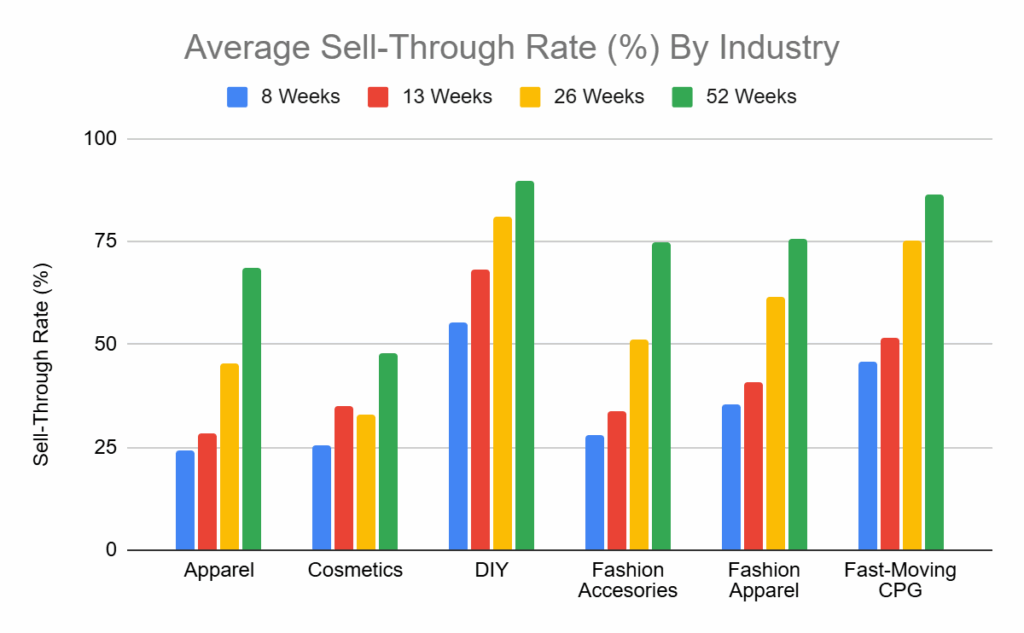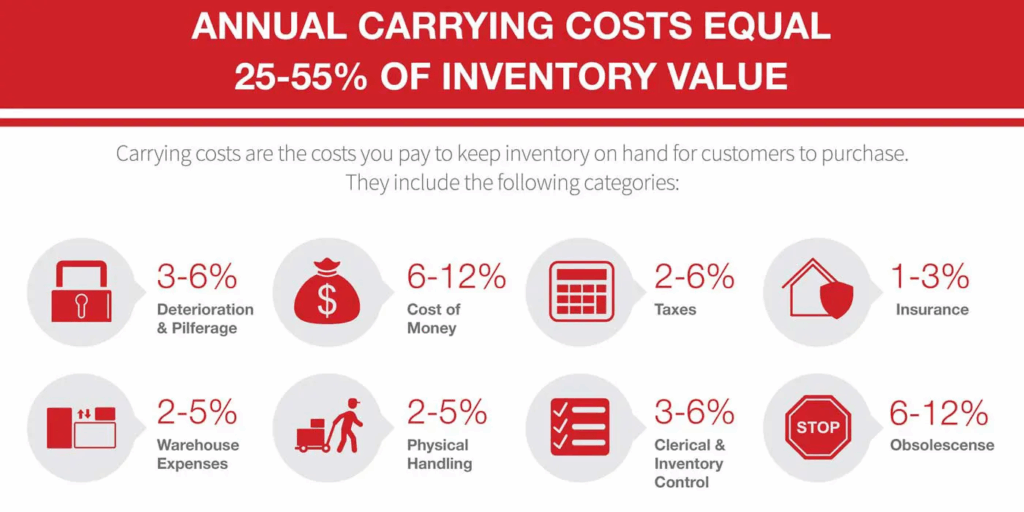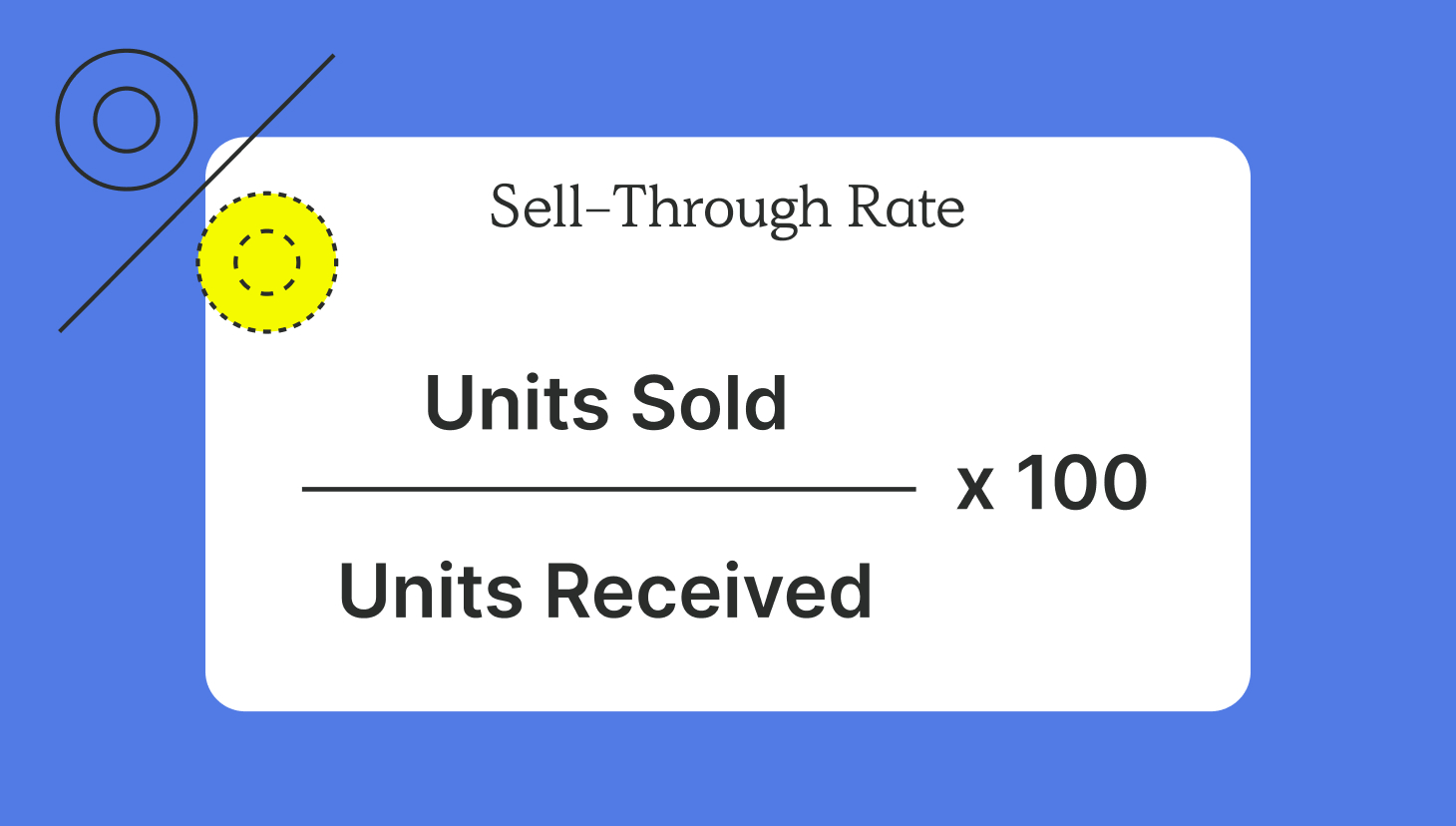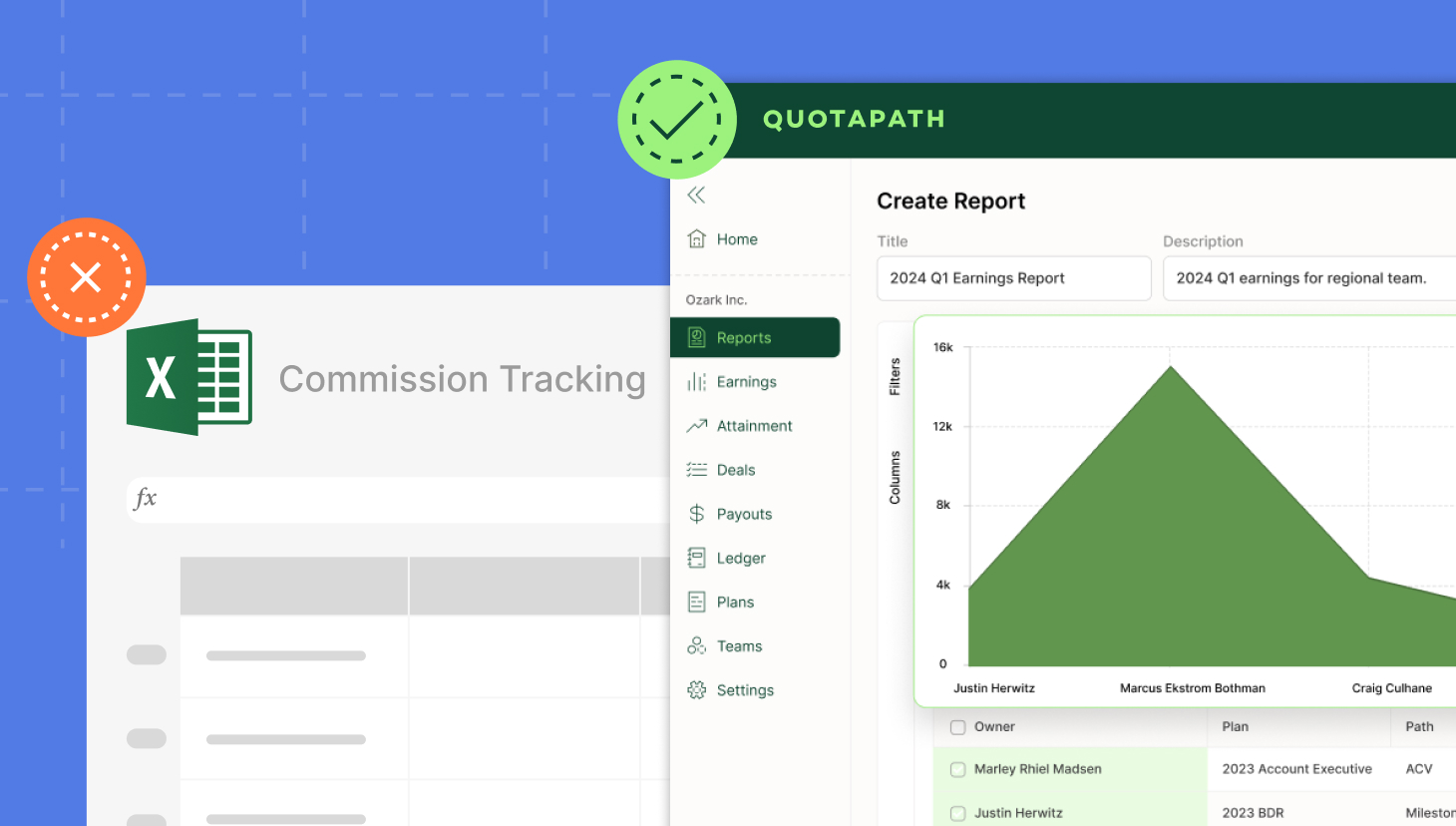In today’s competitive and fast-paced business environment, tracking the right sales performance metrics is essential for sales managers to gauge their teams’ performance.
One key metric that offers valuable insights into both product movement and sales team performance is the sell-through rate.
In this article, we’ll break down what the sell-through rate is, why it matters, and how to use it to measure and boost your sales team performance.
Design, track, and manage variable incentives with QuotaPath. Give your RevOps, finance, and sales teams transparency into sales compensation.
Talk to SalesWhat Is Sell-Through Rate?
The sell-through rate is a key sales metric that measures the amount of inventory you’ve sold over a specific period of time versus the amount of inventory shipped to you from manufacturers.
Sell-through rate provides sales leaders and marketing teams with actionable insights into how well products are performing in the market.
This helps them assess product demand, identify popular products, and evaluate the overall health of their inventory management. It can also serve as a direct indicator of how aligned a company’s sales strategies, marketing efforts, and supply chain operations are with real-time market demand.
How to Calculate Sell-Through Rate
The sell-through rate formula is:

For example, if you received 1,000 units of a product in a given time period and sold 700 units, your sell-through rate would be:

What’s a Good Sell-Through Rate?
There’s no universal answer to what makes a “good sell-through rate”. Benchmarks can vary greatly by industry, product type, sales channel, and time frame. Here’s a quick glimpse at some average sell-through rates across a few industries:

A general benchmark for many retail and B2B businesses is between 70–80%. Rates at this level typically indicate strong product demand, efficient sales processes, and well-aligned marketing strategies.
Lower sell-through rates might point to inventory issues, ineffective sales effort, or misalignment with the target market.
Understanding what qualifies as a good rate for your business model allows you to set realistic sales goals and allocate resources more effectively. It’s a good idea to do some research and find out what the average sell-through rate is in your specific industry.
Why Is It Important to Measure Sell-Through Rate?
Understanding your sell-through rate is about more than just tracking how much inventory moves. It can also provide valuable insights into your sales team performance, product viability, and the effectiveness of your sales and marketing strategies.
Here are five key reasons why tracking sell-through rate is vital for any business looking to stay competitive and maximize profitability.
Identify Your Best and Worst Selling Products
Tracking your sell-through rate by product type or product category helps you identify which items are consistently in demand and which are lagging behind.
This insight allows sales reps and marketing teams to double down on popular products and implement promotions, bundles, or phase-outs for items that aren’t meeting expectations.
It also informs future marketing campaigns, allowing marketers to secure interest by platforming your most popular products.
Reduce Storage Costs
Excess inventory ties up capital and drives up storage costs. By regularly analyzing your sell-through rate, you can better align inventory purchases with actual product demand, leading to leaner stock levels and less waste.
This not only improves your inventory turnover ratio but also helps your business reduce carrying costs by avoiding markdowns, spoilage, or obsolescence.

Manage Cash Flow
The speed at which you convert inventory into closed deals directly affects your cash flow. A healthy sell-through rate ensures steady revenue inflow, allowing you to reinvest in marketing campaigns and new product development.
Businesses with sluggish sell-through often struggle with liquidity issues, limiting their ability to capitalize on sales opportunities or respond to shifts in market dynamics.
Optimize Your Supply Lines
Accurate sell-through data helps streamline your supply chain. With real-time visibility into what’s selling and what’s not, sales managers can better coordinate with vendors and reduce the risk of stockouts or overstocking.
This improves customer experiences, ensures better alignment with customer demand, and supports the creation of more agile, responsive inventory strategies.
Measure Success
At its core, sell-through rate is a great performance goal to monitor. It helps gauge the effectiveness of your sales processes, marketing initiatives, and the entire sales team.
Whether you’re tracking monthly sales, comparing against revenue targets, or measuring growth over time, this inventory metric provides an anchor for understanding how your efforts translate into results.
By integrating it into your sales metrics dashboards, you can monitor team progress toward broader goals and uncover potential areas for improvement in the sales pipeline.
Factors Affecting Sell-Through Rates
Understanding the factors that influence sell-through rate is crucial for making effective adjustments to your sales strategies. Let’s explore some of the key drivers behind fluctuations in this essential metric.
Pricing
Your pricing strategy is one of the most direct levers impacting sell-through rate. If a product is priced too high relative to the market conditions, it may sit in inventory for longer periods. On the other hand, pricing too low can cut into margins and undervalue your product offerings.
Availability
No matter how compelling your product is, if it’s not available when and where customers need it, your sell-through rate will suffer. Stockouts hurt sales and erode trust, which are among the main factors influencing where shoppers spend their money.
Meanwhile, overstocking increases storage costs and eats into profits. Balancing inventory levels with product demand, especially across different sales channels, is key.
Supply Chain
Your supply chain has a direct effect on how quickly you can replenish stock and fulfill orders. Delays or inefficiencies here can cause gaps in availability and hinder sales reps from maximizing sales opportunities.
Sales Team Performance
How well your sales team performs directly impacts sell-through rates, influencing the effectiveness of product sales and how quickly inventory moves.
A strong sales team (perhaps motivated by compensation) drives higher conversion rates and ensures inventory turns over efficiently.
Marketing
Strong marketing campaigns drive awareness and urgency, boosting product demand and accelerating movement through the sales pipeline. When marketing and sales align effectively, the result is increased visibility, higher conversion rates, and a more consistent sell-through rate.
Competition
Lastly, your sell-through rate is always affected by what competitors are doing. If rival brands are offering similar products at better prices, your sales are likely to take a hit.
Regularly monitoring the competitive landscape enables you to anticipate moves, refine your business model, and protect your market penetration rate. Staying proactive helps you retain customer attention and avoid losing ground in fast-moving markets.
Try the most collaborative solution to manage, track and payout variable compensation. Calculate commissions and pay your team accurately, and on time.
Start Trial6 Tips for Utilizing Sell-Through Rate to Gauge Sales Team Performance
Sell-through rate helps the entire sales team assess how well they’re converting leads into customers and effort into results. Here are six practical ways sales leaders can leverage sell-through rate data to evaluate and improve sales team performance.
Track Sell-Through Rate Alongside Other Key Metrics
While sell-through rate offers a window into product performance, it becomes even more impactful when paired with other key sales metrics.
Key performance indicators (KPIs), such as conversion rates and average deal size, can all be analyzed alongside sell-through rate to give a clearer picture of the performance of the sales team.
Creating sales performance dashboards that include data points from all these metrics allows sales managers to see the full picture, from inventory turnover rate to how quickly leads become closed opportunities. Solutions like business process automation can track these KPIs automatically, making it easy to keep up to date on how your team is performing.
This multi-metric approach helps teams more accurately pinpoint where bottlenecks occur and provides valuable insights on how to address them.

Set Clear Performance Targets
Having a clear goal to work toward helps sales managers and their teams focus their efforts toward a measurable goal for success. Using historical sell-through rate data, sales leaders can establish realistic, data-backed performance goals for individual sales agents and entire sales teams.
For example, if one product category consistently sells through at 80%, that benchmark can serve as a sales target for similar items in the future. By connecting sell-through rate to specific sales goals, teams can stay aligned with broader business objectives while remaining accountable at an individual level.
These targets are also useful when forecasting and planning, as they allow for data-driven resource allocation and marketing efforts.
Use the Right Tools
It’s important to ensure that the tools and technology utilized across your business can support your sales efforts. A great place to start is your communications platform.
Investing in reliable communication infrastructure, like business PBX phone systems, ensures your sales teams can contact customers efficiently and affordably.
To realize sell-through data’s full potential, integrate it into your customer relationship management (CRM) system or enterprise resource planning (ERP) platform.
These integrations provide real-time visibility into performance metrics from right across the business, giving decision-makers access to huge amounts of data at a glance.
Free project management tools like Nifty, Monday, and Asana allow teams to align timelines, assign tasks, track progress, and connect daily workflows to broader goals.
Advanced tools can offer predictive insights and flag early warning signs of underperformance by implementing technologies such as artificial intelligence (AI) and machine learning (ML).
Analyze Trends and Identify Gaps
Trends in sell-through rate over a period of time can reveal important insights about your sales process, market behavior, and team performance.
Are certain reps consistently exceeding expectations while others fall behind? Do specific products underperform during certain seasons?
Analyzing data to answer these questions helps identify skill gaps, training needs, or flaws in the sales pipeline. By keeping a close eye on historical trends and aligning them with market dynamics, sales managers can fine-tune their approach, understand what to look for in work experience in resumes of potential hires, and provide better coaching and support to the team.
Focus on Data-Driven Decision-Making
Intuition has its place, but sales team performance improves dramatically when decisions are grounded in data. A strong sell-through rate, analyzed alongside customer behavior insights, can help teams refine messaging, adjust timing, and optimize product focus.

Whether it’s reallocating resources to a high-performing product mix, launching special promotions, or tweaking your conversion optimization strategy, let the data guide your moves. The more data your decision-makers have, the better.
This approach fosters continuous improvement across the sales organization and ensures everyone is rowing in the same direction.
Review and Refine Strategies
Sales isn’t static. Customer preferences shift, market conditions evolve, and new competitors emerge. That’s why it’s vital to continually assess how your sales strategies are performing using real-time sell-through rate data.
Regular performance reviews, informed by your inventory metric and other KPIs, help teams remain agile. Teams that embrace a culture of optimization are better positioned to meet their revenue targets. So, don’t be afraid to pivot when necessary.
This could mean adjusting your sales content, focusing on a different customer segment, or expanding to a new sales channel.
It’s also possible to change direction by outsourcing other areas of the business to prioritize your sales strategies internally.
For example, many companies will choose to outsource call center services to third-party partners, ensuring consistent customer engagement while freeing up in-house reps to focus on high-value sales activities.
How to Improve Your Sell-Through Rate
If your sell-through rate isn’t quite hitting the benchmark you’d envisioned, don’t panic; there are plenty of things you can do to give it a boost.
Invest in Marketing
Strong marketing initiatives generate awareness, create demand, and push products faster through the pipeline. You could try using customer relationship management (CRM) data to personalize your messaging and align your marketing strategies with customer needs.
You could also expand your marketing channels to reach new audiences. For example, you could invest in influencer partnerships or social media marketing.
Hold Special Promotions
Time-limited deals, bundle offers, and loyalty discounts are all tried-and-tested methods for accelerating sales. They’re especially effective for slow-moving stock or seasonal inventory. Promotions stimulate demand, encourage repeat purchases, and can help you hit urgent monthly revenue or sales targets
Reduce Inventory
Streamlining your product mix and avoiding overstock helps maintain a healthy inventory turnover rate. Focus on popular products with proven performance, and trim underperforming SKUs that increase sales expenses without contributing meaningfully to your revenue.
Lean inventory strategies not only improve sell-through rate but also reduce your customer acquisition costs and improve ROI across the board.
Avoid Stockouts
Nothing kills momentum like running out of stock on high-demand items. By using forecasting tools that analyze historical trends for predictive sales analytics, you can ensure availability matches demand.
Avoiding stockouts enhances the customer experience and keeps satisfied customers coming back.
Be Aware of Seasonality
Understanding seasonal trends helps you plan better and stock smarter. You can stock up on items when you know they’re guaranteed to sell and reduce your inventory during periods of lower demand.
This ensures you always have enough stock to meet demand but are never burdened with reserves that you’ll never sell-through.
Turning Metrics Into Momentum
In today’s fast-paced, data-driven landscape, knowing your sell-through rate isn’t just about tracking how quickly inventory moves; it’s about unlocking actionable insights that can elevate your sales team performance and drive long-term revenue growth.
By integrating sell-through rate with other key sales metrics, aligning it with your sales goals, and using it to inform daily decisions across your sales organization, you can empower sales reps and leaders alike to make smarter, faster, and more strategic moves.
When used effectively, this essential metric bridges the gap between operations and sales, giving you a clear, real-time picture of what’s working and where there’s room to improve.
Remember that metrics are only as powerful as the actions they inspire. The more you invest in understanding and applying them, the more your sales team can turn effort into results and results into growth.



